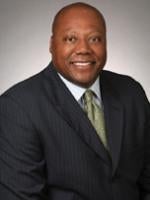On 27 May, the Federal Reserve Bank of Boston (Federal Reserve) published a significant amount of new information about the Main Street Lending Program (Program), including forms and agreements (see here) and updated FAQs. The new documents provide new information concerning eligibility, maximum loan amounts, the application process, certifications, and other key terms for interested borrowers and lenders. We expect new details to emerge in the coming weeks as the Federal Reserve continues to create the infrastructure necessary to make the Program operational. Such clarifications and changes may be subject to influence. Therefore, it is critical to engage with the Federal Reserve about potential changes to the Program. Among the numerous important changes included in the forms and agreements and the FAQs are several details that clarify how affiliates may affect prospective borrowers’ participation in the Program.
The Meaning of “Significant Operations in the United States”
To be eligible for a loan through any of the Program’s facilities (the New Loan Facility, the Priority Loan Facility, and the Expanded Loan Facility), a borrower must certify that it has “significant operations in the U.S.” To meet this standard, the borrower must review its operations on a consolidated basis with its subsidiaries. However, the borrower should not include the operations of its parent company or its sister affiliates. Examples of having significant operations include (1) having more than 50 percent of assets located in the United States, (2) having more than 50 percent of annual net income or annual net operating revenues generated in the United States, or (3) having more than 50 percent of annual consolidated operating expenses (excluding interest expense and any other expenses associated with debt service) generated in the United States. Although these examples are provided in the FAQs and the borrower certification documents themselves, they are a “non-exhaustive list of examples that reflects the principles that should be applied by the Borrower when evaluating its eligibility under this criterion.” These are the same standards established for the Primary Market Corporate Credit Facility and the Commercial Paper Funding Facility.
The Meaning of “Majority of Employees in the United States”
An eligible borrower also must certify that it has a “majority of employees in the United States.” As with the “significant operations” certification, the borrower must evaluate its operations on a consolidated basis together with its subsidiaries but excluding its parent and its sister affiliates.
Notably, this methodology is different from the required method of determining whether the borrower meets the total employee threshold (15,000 or fewer employees). To determine whether the borrower has 15,000 or fewer employees, the borrower must aggregate all of its employees (foreign and domestic) with the employees of its affiliates (both foreign and domestic). Thus, a prospective borrower must calculate its employees differently for these two requirements and certify its eligibility for both calculations (unless it meets the 2019 annual revenue threshold requirement of US$5 billion or less, which is a distinct basis for eligibility from the 15,000 employee threshold).
Eligibility Considerations for Affiliated Groups of Companies
A prospective borrower is ineligible for the Program if any of its affiliates have participated in the Primary Market Corporate Credit Facility. If an affiliate has participated in or is applying to participate in one of the specific facilities within the Program (i.e., the New Loan Facility, the Priority Loan Facility, or the Expanded Loan Facility), then the prospective borrower may only seek assistance from that same facility. A prospective borrower must provide appropriate certifications regarding these requirements. This requirement will require careful coordination for affiliated groups that may be considering participation in the Program or (if rated investment grade) in the Primary Market Corporate Credit Facility.
Effect of Affiliates on Maximum Loan Size
The FAQs make clear that the limits on borrowing by a member of an affiliated group are based on the relevant metrics of the group and not only of the borrower in isolation. Therefore, the maximum amount a borrower can receive under the Program in aggregate is limited not only by the borrower’s own leverage level but also by the leverage level of its affiliates, on a consolidated basis, and is reduced by the amount of any loan extended to the borrower’s affiliates. Consider the following example: A borrower applies to receive a loan under the New Loan Facility. The maximum amount the borrower may receive in aggregate is US$25 million. If an affiliate of that borrower previously received US$10 million in loans through the New Loan Facility, then the borrower may, at most, receive US$15 million and only from the New Loan Facility. Similarly, if that affiliate has a smaller outstanding and undrawn available debt level than the borrower (even if neither the borrower nor the affiliate has borrowed under the Program), the maximum loan size the borrower can receive will be reduced.
Conclusion
Since the Program was announced in April, the Federal Reserve has made important changes to the Program’s terms that affect affiliated groups of companies. Some important questions remain open, particularly whether nonprofit institutions and asset-based borrowers will be eligible borrowers and whether nondepository institutions will be eligible lenders. The FAQs state that the Federal Reserve is continuing to evaluate these issues, so the changes described in this alert are not the last word in the evolution of the Program. On the contrary, the Federal Reserve will continue to revise existing requirements and announce new terms in the coming days and weeks, so engagement with the Federal Reserve now is critical.
For additional insights into these developments, please contact any of the authors and see prior alerts about the Program here and here.
For information about the Federal Reserve’s other lending facilities, please see the following links:
-
For the Primary Market Corporate Credit, the Secondary Market Corporate Credit, and the Term Asset-Backed Securities Loan Facilities, please see here, here, and here.
-
For information about the Paycheck Protection Program and Municipal Liquidity Facilities, please see here.
-
For information about the Money Market Mutual Fund Liquidity Facility, please see here and here.
-
For information about the Commercial Paper Funding and Primary Dealer Credit Facilities, please see here, here and here.








 />i
/>i
